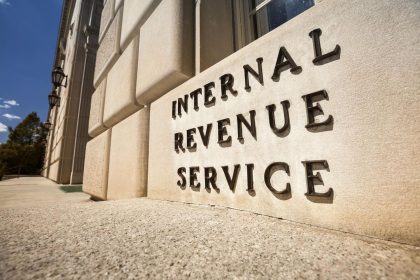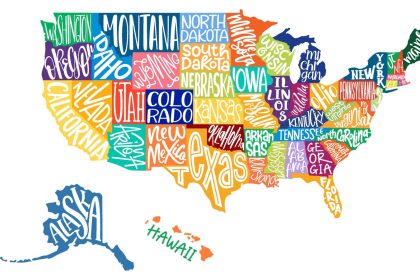One common question from employees with employee stock purchase plans is if there’s an employee stock purchase plan tax. While you’ll typically owe taxes based on the profits when you sell those shares later on, when and how much you’ll owe will be based on the specific nature of your plan. Under a qualified employee stock purchase plan (ESPP), you typically don’t owe any taxes when you purchase shares. However, under a non-qualified ESPP, you’ll owe taxes on any discount you get when you purchase shares. Those are just the basics; let’s take a deeper look at how the employee stock purchase plan tax works.
Want to know how an employee stock purchase plan fits into your financial or retirement planning? Consider reaching out to a financial advisor.
Have Questions About Your Taxes?
A financial advisor may be able to help. Match with an advisor serving your area today.
Get Started Now
What Is an Employee Stock Purchase Plan (ESPP)?
An employee stock purchase plan is a form of stock option offered by employers as a benefit to their employees. Under this benefit, an employee can purchase shares of company stock through their employer.
An ESPP works through direct withholding. When you enroll in a plan, you select the percentage of your paycheck you want to contribute to your stock purchase. Your employer directly withholds that amount, and uses the money to purchase company stock on your behalf. Those shares are then placed in a portfolio that you own and control. So if you contribute 3% of your paycheck to your ESPP, your employer would withhold 3% from each of your paychecks and put it toward the purchase of stock on your behalf.
In an employee stock purchase plan, you directly own the shares of stock. They are yours to hold, sell, or otherwise control as you see fit. However, it’s important to note that some companies may require a holding period, which is a minimum amount of time that you must hold the stock before you can sell it.
While employers are free to structure their plan schedule as they see fit, most ESPPs follow three stages:
- Enrollment period: The period in which you declare if you’re enrolling in the ESPP and, if so, state the amount you want withheld.
- Withholding period: Your employer withholds money from your paycheck.
- Purchase: At the end of the withholding period, your employer uses the total amount withheld to purchase stock on your behalf.
For example, an employer might run a quarterly ESPP:
- Enrollment period during the month of January: You have from January 1 until January 31 to enroll in the ESPP.
- Withholding period through February and March: If you enrolled for this quarter, your employer would withhold your contributions from your paycheck through February and March.
- Purchase period of March 31: Your employer purchases stock on your behalf on March 31.
Under a typical employee stock purchase plan, you can choose to enroll in each purchase period regardless of your past or future participation. You can also choose to adjust your contributions, increasing or reducing your participation for any given enrollment period. Again, this is just a typical structure; employers can design their ESPP withholding and purchase schedule as they see fit.
Value of an Employee Stock Purchase Plan

Under an ESPP, it’s common for companies to offer stock at a discount. This is usually one of the most valuable aspects of an employee stock purchase plan. You can buy company stock at a premium, allowing you to potentially profit from both the company’s future success and the advantaged price you received.
Typically, this discount comes in one of two ways:
- Flat rate: You receive a simple percentage off the stock’s fair market value. For example, your company might offer an ESPP with shares at 10% off the current market price.
- Lookback rates: You receive a lookback rate based on the stock’s market price on a specific date, typically the start of the withholding period. At the time of the purchase, you receive the lower of either the current market price or the lookback price.
An employee stock purchase plan also has the value of withholding. By automatically deducting your contributions and making this purchase on your behalf, the company simplifies the process of saving and investing. You don’t need to worry about the mechanics of opening a stock portfolio, or plan your finances around money you never receive.
Taxes on an Employee Stock Purchase Plan
When it comes to the employee stock purchase plan tax, all ESPPs follow ordinary tax laws when you sell your shares. This means that you’ll owe income taxes on your profits if you held the shares for less than 12 months, and you’ll owe capital gains taxes on your profits if you held the shares for longer than 12 months.
Beyond that, the tax treatment of your plan depends on whether it’s qualified or non-qualified under IRS Code Section 423.
A qualified plan is one that meets the requirements of Section 423. This requires oversight and approval by corporate shareholders, the company has to offer this plan to most employees, and the plan cannot offer a discount greater than 15% off the stock’s market price.
If the plan meets Section 423’s requirements, it receives favorable tax status and there is no tax event at the time of purchase. Plan participants do not owe any taxes based on discounts or other favorable share prices.
A non-qualified plan is one that does not meet the requirements of Section 423. This offers more flexibility, including the ability to offer discounts greater than 15%. However, plan participants do not receive favorable tax treatment. Any discount off of the stock’s fair market value (whether through a flat discount or a lookback) is considered compensation, so plan participants owe taxes based on that difference at the time of purchase.
For example, say the company’s stock is selling at $20 per share, but your ESPP offers it for $15. You will then owe income taxes on that $5 per share, as that value would be considered a taxable benefit.
In all cases, the income you dedicate to an ESPP is after-tax income. You will still include that money in your taxable income, and your company will withhold income taxes accordingly.
Bottom Line

An employee stock purchase plan is an employee benefit offered by some companies. If you have a qualified plan, you typically won’t owe any taxes when you buy stock. If you have a non-qualified plan, you typically will owe taxes based on the value of your plan’s discount. In all cases, you’ll owe standard income or capital gains taxes when you sell your shares.
Tips on Maximizing Your Benefits
- One of the most common employer benefits is a 401(k) plan. Here’s how to maximize the many benefits of your 401(k).
- A financial advisor can help you build a comprehensive retirement plan. Finding a financial advisor doesn’t have to be hard. SmartAsset’s free tool matches you with up to three vetted financial advisors who serve your area, and you can have a free introductory call with your advisor matches to decide which one you feel is right for you. If you’re ready to find an advisor who can help you achieve your financial goals, get started now.
Photo credit: ©iStock.com/VioletaStoimenova, ©iStock.com/insta_photos, ©iStock.com/shih-wei
Read the full article here

















